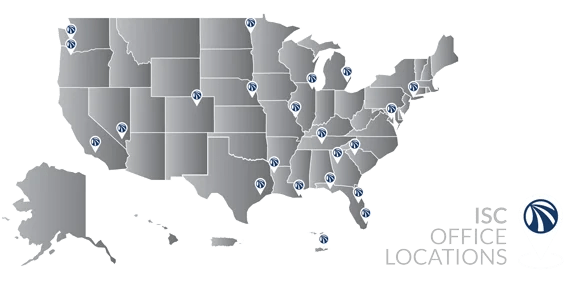A risk assessment is the process of identifying hazards, profiling hazard events, taking inventory of assets, and estimating losses. It also includes the process of quantifying and characterizing the threats to humans, property, and the environment. Whether you are a community, county, regional authority, or a state, understanding risk, especially as it relates to natural and manmade hazards, is a critical element of any emergency management program.
National Preparedness Goal and Core Capabilities
The National Preparedness Goal defines the threats and hazards that pose the greatest risk to the security of the United States. It also identifies 32 distinct core capabilities organized in five mission areas: prevention, protection, mitigation, response, and recovery.
The mission areas and core capabilities organize the community-wide activities and tasks performed before, during, and after disasters into a framework for achieving the goal of a secure and resilient nation.
Benefits of THIRA
Developing a THIRA helps public safety officials determine the specific level of capability necessary to best address a community’s hazard and threat risk. These community-specific capability levels are what communities use to determine their current level of capability, identify their capability gaps, and identify how they can close those gaps. The outputs of the THIRA/SPR provide communities a foundation to prioritize decisions, close gaps in capability, support continuous improvement processes, and drive the other National Preparedness System components.

Involving Stakeholders and Subject Matter Specialists
It is commonly recognized that preparedness is a shared responsibility in every community. Involving stakeholders and the input of subject matter specialists during the Stakeholder Preparedness Review process will provide valuable input and perspectives on a community’s true capabilities, as well as build consensus and support to address capability gaps.
The THIRA Process
Developing a THIRA involves a series of self-assessments conducted by stakeholders and subject matter specialists that are presented in the following three-step process:

Controlling for Accuracy and Reliability
When conducting risk assessment through self-assessments, it is important to recognize that perception of the threat and hazard risk, the consequences, and capabilities are often influenced by the assessor’s personal experience and perspectives. Bias and agenda setting could also skew the accuracy of the results. To ensure accuracy and reliability of the THIRA process, the self-assessment must involve a proven process and established methodology that provides adequate rigor to control for uninformed subjectivity.
Integrating the THIRA with Other Community Plans and Assessments
The THIRA process provides a useful tool for public safety professionals to assess capabilities and identify gaps. However, when the THIRA process builds upon other community assessments developed under the purview of other planning efforts, such as hazard mitigation planning, the results can become even more insightful and provide a fundamental component of a community’s comprehensive emergency management program.
Miami-Dade County, FL: Community Vulnerability Risk Analysis & THIRA/SPR Integration

ISC assisted Miami-Dade County as they embarked on a project to develop a county-wide, comprehensive and objective risk assessment and vulnerability analysis. The goal was to provide a solid baseline understanding of the risks faced throughout the county as well as a shared awareness of the County’s existing capabilities and resource gaps. The ultimate purpose of the THIRA was to provide a holistic understanding of Miami-Dade activities and investments toward managing a range of potential threats and hazards.
This project resulted in the development of a sophisticated, research-based community vulnerability and hazard risk analysis of the County. The Community Vulnerability, Risk and Resilience (CVR2) assessment system was supported by a rigorous methodological process that incorporates over 4,500 community indicators and scientifically-based measurements of community vulnerability, capability, and hazard risk analysis. This systematic risk assessment process was used to develop a comprehensive community vulnerability and all hazard risk assessment that is considered the most reliable and accurate hazard risk assessment in the nation.
The information from the CVR2 was used as a baseline reference for Miami-Dade County to develop a THIRA/SPR that was consistent and compliant with DHS’ CPG 201 guidance. The THIRA/SPR process involved input from community stakeholder and subject matter experts through a series of interviews, surveys, and focus group sessions that involved inclusive community participation practices that allow for consensus building, information exchange, social proof, and an environment that fosters ongoing collaboration and shared situational awareness.
OUR CAPABILITIES
- Community Lifelines
- Continuity of Operations Planning
- Geographic Information System (GIS) Support & Services
- Homeland Security & Active Threat Readiness
- Planning, Training & Exercise Development
- Public Engagement & Information Support
- Public Health & Medical Support
- Threat and Hazard Identification Risk Assessment
Contracting Made Easy – Emergency Contract Vehicles
Following a declared state of emergency, the Federal Government allows local and state government to bypass their standard procurement policies and implement emergency procurement procedures. In times of emergency, understanding these unique contract vehicles can be essential in saving time, money, and resources. ISC has expertise working with these unique contract vehicles, which allow us to guide our clients on how to navigate the contracting process easily and expeditiously.
Contracting with ISC is easy, and a number of pre-established contract vehicles can be utilized to facilitate the procurement process
A program management software tool, A best-fit technology solutions for organizations and consulting companies.
The industry’s most powerful and intuitive comprehensive emergency program management and planning system. A complete platform of independent but integrated web-based tools designed to alleviate the burden on planning and preparedness professionals, OES means you can more effectively manage the comprehensive cycle of preparation, response, recovery, and mitigation.


